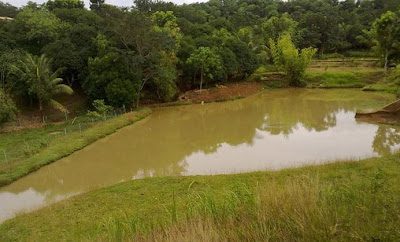"Out of difficulties grow miracles."
- Jean de la Bruyere (French essayist and moralist, 1645-1696)
- Jean de la Bruyere (French essayist and moralist, 1645-1696)
A few hours before typhoon Juan dumped all its fury, one of our pregnant sheep gave birth to a cute little lamb. During the wrath of the storm, the shelter for the sheep collapsed. Probably sensing the impending disaster, the sheep abandoned their shelter so when it came tumbling down no one was hurt. And so we thought.
After the deluge has passed, all sheep were accounted for except for the newborn lamb. They thought it might have been carried away by the fierce wind and was counted as one more casualty.
Three days after, as they were sifting through the debris they found the little lamb crouched under a pile of wood covered in mud, silent but alive. Separated from its mother for several days, it was visibly weak from lack of nourishment. Quickly they took the young animal and cleaned it to get rid of the thick and heavy mud.
They tried to reunite the young sheep with its mother but the natural bond between the ewe and her lamb has been severed. The mother no longer recognizes her own young and refused to suckle her baby. Now the lamb has a new family. Its human foster family take turns in bottle-feeding her.
Miracles do come out of difficulties. And sometimes they come in little packages too.


















